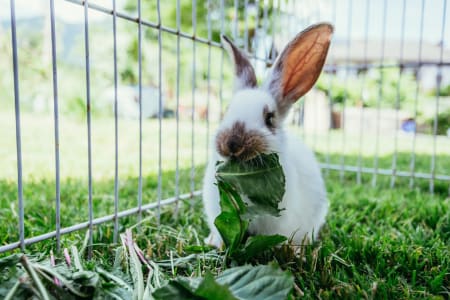In the realm of zoological classifications, a common misconception has lingered: Are rabbits rodents? Let's debunk this myth and shed light on the distinctive features that set these two groups apart.
Clarifying Taxonomic Confusion
Rodents: Nature's Gnawers
Rodents, constituting a vast order in the animal kingdom, are characterized by continuously growing incisors and a single pair of sharp, chisel-like front teeth. This order includes familiar creatures like mice, rats, and squirrels. Their evolutionary adaptation for gnawing makes them integral to various ecosystems.
The Lagomorph Enigma
Rabbits, on the other hand, belong to the order Lagomorpha. While they share dental similarities with rodents, possessing two pairs of incisors, their distinctions are substantial. Lagomorphs, a term encompassing hares and pikas, boast specialized hind limbs built for powerful bursts of speed – an adaptation absent in rodents.
Dental Dissection: Unveiling the Truth
Delving into the dental anatomy of rabbits and rodents provides a clearer understanding of their taxonomic positions.
Are rabbits rodents?
No, rabbits and hares are members of the Leporidae circle of relatives, certainly one of two families (the alternative being the Ochotonid or pica family) inside the order Lagomorph. However, if this question were asked extra than 100 years ago, the solution would have been "sure." till the early 20th century, zoologists categorized the rabbit and other lagomorphs (as individuals of the order Lagomorph have been recognized) in the order Rodentia (rodents), which blanketed rats, mice, squirrels, and marmots.
What is the distinction between lagomorphs and rodents? Rabbits, hares, and pikas are distinctive from rodents in numerous methods, as an example, they have four incisor enamel (rather than ) and are almost totally herbivorous (while many rodents also devour meat).
Rabbits are gregarious burrowing animals with lengthy ears, lengthy hind legs, and a quick, furry white tail. Although there are several genera and species inside the own family Leporidae, the animal we normally maintain as a puppy (and additionally serve in casseroles or use for fur) is the European rabbit, Oryctolagus cuniculus.
Cuniculus (Latin for a rabbit), through the old French phrase conin, gave us the English word Coney. In step with the Oxford English Dictionary, rabbit at the start referred best to a young rabbit: the adults had been called coneys. The phrase Coney steadily declined in trendy usage (it is now utilized in British English to refer to rabbit fur), rabbit turning into the same old time period for the person animal. Today the standard time period for a young rabbit is kitten.
Ecological Roles: Setting Them Apart
Rodents: Ecological Engineers
Rodents play pivotal roles in ecosystems as seed dispersers, aiding in forest regeneration. Their burrowing activities contribute to soil aeration and nutrient cycling, showcasing their significance in maintaining ecological balance.
Lagomorphs: The Grazing Guardians
Lagomorphs, primarily herbivores, fulfill ecological niches by controlling vegetation through grazing. Their selective feeding habits influence plant diversity, preventing the dominance of specific species.
Evolutionary Paths: Diverging Trajectories
Rodents: Adaptive Diversity
With over 2,000 species, rodents have adapted to diverse environments globally. From deserts to arctic tundras, their evolutionary journey has resulted in remarkable diversity and adaptability.
Lagomorphs: Specialized Survivors
Lagomorphs, while less numerous in species, showcase specialized adaptations. Their unique hind limbs and intricate dental structures exemplify the evolutionary nuances that have shaped their survival strategies.
Conclusion: Unraveling the Enigma
In summary, the classification of rabbits as rodents is a misconception rooted in superficial resemblances. By dissecting their dental structures, ecological roles, and evolutionary paths, it becomes evident that these two groups occupy distinct niches in the grand tapestry of the animal kingdom. Understanding these nuances not only dispels myths but enriches our appreciation for the biodiversity that surrounds us.
